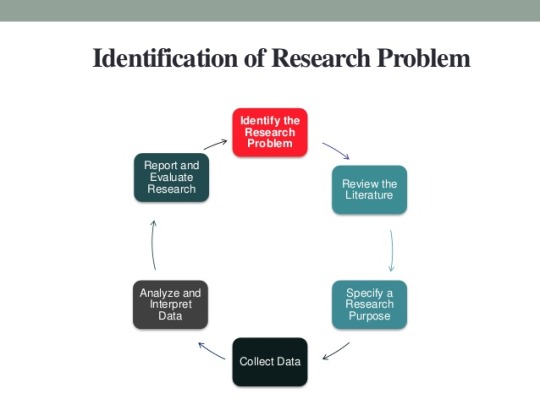Quote
Global virtual leadership is the art of bringing diverse people from different places together to collaborate with one another to produce a work product that represents the array of the group's different cultures and work experiences that meets an organization's goals and objectives.
Diana Koppes & Desiree Oden
youtube
The need for virtual closeness is so important in a virtual team relationship. Getting to know a team member through direct communication fosters closeness. Many presenters and speakers mention that the eyes are the windows to the soul, i.e., see what you can do to create virtual closeness on your global virtual team. Realizing the importance of virtual closeness and taking the necessary steps, only aids current and future global teams, as well as leadership.
Acknowledging global team leadership is both a shared and emergent leadership style, helps to shape a global virtual team’s processes throughout the team life cycle. The influence of different expertise aids the facilitation of experiential learning development in dispersed workers and stakeholders, by embracing a fragile communication style that uses group computer moderated communications (CMC – Schwartz, 2007). Therefore, global virtual teams (GVTs) typically never meeting face-to-face, with the accepted concept that all global virtual team members of a project or organization will conduct, engage in, and deliver all projects with no direct physical interaction with other members to achieve successful completion and high performance of assigned tasks of complexity.
0 notes
Text
Introduction to the Just the Two of Us (JTU) Global Leadership Blog
Global virtual teams (GVTs), global project teams (GPTs), and virtual teams (VTs) all rely on inter-team relational bonds to be productive (Zakaria, Amelinckx, & Wilemon, 2004). A GVT leader creates an environment that allows the team to reach common goals including timely completion of group projects, and work production that features the strengths of individuals on the team (Manole, 2014). As a team, Just the Two of Us (JTU) aims to describe and/or demonstrate how virtual closeness can enhance team dynamics that influence productivity and success in reaching GVT goals (Hildebrandt, Jehle, Meister, & Skoruppa, 2013). Thus, the information from the leadership blog will assist leaders who have geographically dispersed teams that experience physical isolation, which creates a lack of virtual closeness.
The JTU global leadership blog seeks to increase the awareness and importance of virtual closeness as a particularly effective way to increase overall performance of a GVT (Hildebrandt et al., 2013). An additional goal of the global leadership blog is to feature aspects of virtual closeness and how that dynamic affects GVTs. The content following this introduction addresses the preferred platform for the JTU global leadership blog in terms of the practical and research problems, the research question and significance followed by the trends and gaps, and the argument of virtual closeness in GVT leadership research.
0 notes
Photo

About this Master Blogger: Desiree has gained a limitless amount of individual, group, and organizational knowledge. She is a global wholistic change agent that loves to come up with ideas to bring people closer together, starting intimately and working outward toward larger societies. As the owner of UnSeen RayDe’Ance LLC, a global transformations consultancy enterprise that guides others toward achieving their own self-mastery, Desiree is all about diversity and inclusion, plus spreading the love and wisdom.

Skilled in education within several areas inlcuding instruction, tutoring, curriculum development, social media e-learning, and plain ol community enhancement through collective interventions. These capabilities aided studying global virtual leadership and opened a clear path to practice virtual closeness and create “Purple Spaces” from personal to professional settings. Atop her education background, Desiree enjoys using her creative skills for learning enhancement, spreading global healing by traveling, and transforming the status quo through wholistic practices based on ancient ancestral knowledge.
Before social networking changed the global communication game, Desiree attended the University achieving both her Master of Arts in Liberal Arts and Creative Writing, as well as her Bachelor of Arts in History with emphasis in women’s history and psychology. Currently, She studies Organizational Leadership at the doctoral level. This background has helped her grow both personally and professionally, with her future wife, dog and babies.
0 notes
Photo

Blogmaster bio: Diana is a PhD Candidate with The Chicago School of Professional Psychology, seeking a doctoral degree in Business Psychology.
She attended the University of Phoenix achieving a Master of Science in Industrial and Organizational Psychology. And, she graduated from California Baptist University with a Bachelor of Arts degree in Liberal Studies with an emphasis in human development.
Diana has worked in public service for many years in several areas – public safety, education, affordable housing, anti-poverty programs, and transportation. She loves to study team dynamics like virtual closeness of GVTs and concepts like Purple Space (more to come on that!). She manages and leads both proximal and virtual teams in the government sector.
She enjoys living in the beautiful Pacific Northwest with her husband, many dogs and a cat, in an idyllic rural Oregon community.

0 notes
Text
The Reasons: Tumblr. Platform Choice
When choosing a blogging platform to examine GVT leadership, a blog developer needs to consider the cost, flexibility, and ease of set up (Wpbeginner, 2017), as well as, the functionality and suitability of the platform to the blog content, blog ambiance, and sense of community. Thus, the many platform options presented to bloggers of GVT leadership must also consider the audience being informed (e.g., differences in generations), their needs (e.g., linear, non-linear, serial, associational networking, and long-term memory), and learning styles (e.g., auditory/music, spatial/visual, linguistic/verbal, active or reflective, sensing or intuitive, global or sequential, etc. (Dede, 2005; Felder & Soloman, n.d.). For the purposes of JTU’s global leadership blog, Tumblr® provides the functionality and appearance that is appealing to the team, in addition to the user numbers, its influence, and the social competence it is recognized for in order to reach a broad audience about the specific aspect of GVT leadership – virtual closeness.
3 notes
·
View notes
Quote
I like Tumblr, and knowing the reasons it was the chosen blogging platform
Desiree
4 notes
·
View notes
Audio
Due to JTU’s concept of global leadership, the inclusion of global perspectives is necessary from art to music to dance to film. The perspectives outside of our own can aid in establishing a global virtual network that is tightly bonded and more inclusive of the worldwide audience that exists virtually. What better way to kick things off, then with music.
Les Nubians is a French musical duo composed of sisters Hélène and Célia Faussart from Paris, France. In 1985 the sisters moved with their parents to Chad. Seven years later, they returned to Bordeaux, France, and began singing a cappella, producing poetry slams in Bordeaux and Paris, and singing background vocals for various artists worldwide. The duo's debut album Princesses Nubiennes was released by Virgin Records, France, in 1998.
They have become one of the most successful French-language musical groups in the U.S., best known for their Billboard R&B Single "Makeda" from their Grammy-nominated album Princesses Nubiennes. Les Nubians were the 1999 Soul Train Lady of Soul Awards winners for Best New Artist, Group or Duo and received two NAACP Image Awards nominations in 2000 (Wikipedia, 2017).
Even though the standard thought is that music is a universal language, there still exists a practical problem for global virtual leaders working with globally dispersed team members. What’s that problem?
Keep following, reading, and watching
0 notes
Text
Practical Problem
The absence of virtual closeness may hinder performance, team success, and genuine trust among GVT members. Paradoxically, researchers have posited the need for virtual teams to have a physical presence. When teams cannot meet face-to-face then strategies such as developing relationships through the use of technology seem effective in addressing the absence of virtual closeness (Dube & Robey, 2009). Discovering how critical virtual closeness is on GVT leadership during team formation of a “Purple Space” is a highlight in GVT literature. The "Purple Space" is an intentionally innovative concept of collaborative space negotiated by GVT members to connect intimately. A “purple space” is created when two local spaces (red and blue) join together to create a new virtual space. The space is designed to allow members to build a shared identity for their work together in virtuality (Hildebrandt et al., 2013). As a "glocal" construct, the purposely built artificial social innovation is to make the space more practical and to improve virtual performance. Therefore, this space decreases complexities found in new GVT spaces through collaboration processes and frictionless communication. The end product produces personal growth and advances the level of maturity in GVT members (Intercultures, 2017). Frequent conversations within the "Purple Space" may be a good start to resolving the practical problem of virtual closeness.
Although Hildebrandt et al. (2013) coined the terms virtual closeness and “Purple Space,” neither term addresses the critical value among GVTs, but rather, the authors only offer recommendations and strategies for leaders of global work environments (Katz, 2015). This global leadership blog will inform present and future GVT member-leaders how to delve deeper into group formation processes to achieve virtual closeness. The data gathered from JTU’s global leadership blog will provide results that impact the workplace by demonstrating the importance of both feeling close as individuals on a GVT and feeling close to the spaces in which they work.
2 notes
·
View notes
Video
youtube
Helping virtual teams feel they’re valued and appreciated can result in increased team effectiveness.
1 note
·
View note
Quote
You can't solve a problem until you're asking the right question
Unknown
0 notes
Text
What’s the Impact of this Global Leadership Blog?

The impact from Just the Two of Us Global Leadership blog include ways to strategize team cohesion, with the collaborative nature of a “Purple Space” environment (Hildebrandt et al., 2013). GVT member-leaders will learn the benefits of blending many geographically diverse groups into one blended group that leverages the individual strengths of each team member, as well as creates a new, hybrid set of strengths demonstrated by the combination of many groups. Another example of the influence of the JTU leadership blog is the intermingling of diverse outlooks to increase the overall performance of the resultant team.
#JTU#researchimpact#impactful#marketing#business#organizationalleadership#globalleadership#consulting#coaching#training#virtualcloseness#virtual teams
1 note
·
View note
Photo

The dynamic of a virtual collaborative space builds on diversity versus standardizing it. The unknown critical value of virtual closeness while building a “Purple Space” opens up a research problem.
1 note
·
View note
Quote
How can JTU's global leadership blog impact current and future GVT member-leaders?
JTU
1 note
·
View note
Video
youtube
Watch this video... although it features trust as a necessary component of VTs, it also shows the dynamic created by geographically dispersed teams and why it’s so important to create virtual closeness using something like Purple Space as a way to bring team members closer together and performing well.
1 note
·
View note
Conversation
Research Problem
The research problem revolves around the need for additional information to support the premise for virtual closeness in GVTs in areas of increased performance, team success, and genuine trust among members of a GVT. Some research supports the premise that global virtual teams are less effective than collocated teams, due to physical isolation and lack of virtual closeness (Bartel, Wrzesniewski, & Wiesenfeld, 2012; Hildebrandt et al., 2013). The success of GVTs and how effective leadership can affect a team’s success is discussed in the conceptual framework.
1 note
·
View note
Quote
How is JTU's conceptual framework going to inform the audience of virtual closeness in global virtual teams?
JTU Just the Two of Us
1 note
·
View note
